Joining the Pacific to the Atlantic, the modern day Panama Canal is the result of human ingenuity and courage that goes back to the early 16th century when the Spaniards arrived on the isthmus of Panama. The first real attempt to build an all-water route through Panama began with the French in 1880, but financial troubles and diseases made the initiative fail. After Panama gained independence in 1903, it negotiated an agreement with the United States for the construction of the Canal.
It was completed in 1914, with the United States managing the waterway until 1999
. Since it's opening in 1914, more than a million ships have transited the Canal.
This inter-oceanic waterway uses a series of locks with two lanes that operate as water elevators and raise ships from sea level to the level of Gatun Lake, 26 meters above sea level. After crossing the Continental Divide, another series of water elevators lowers the ship to sea level on the other side of the Isthmus. The water used to raise and lower ships is drawn from the reserves of Gatun Lake, once the lock gates are opened, gravity forces the water down into the next lock until the level of both are equal.
Our transit of the Canal started on the Atlantic side at Gatun Locks where we were raised to the same level as Gatun Lake. This involved moving through three separate locks. Then we made our way through the Lake, through the Culebra Cut – it is the Canal’s narrowest part, was carved from the rock and limestone that make up the Continental Divide and it is said that the material excavated from this area during construction could be used to erect the equivalent of 63 Egyptian pyramids
.
Our journey continued under the Trans-American highway and to the Pedro Miguel Lock where we began to head back down to sea level, it was at this time we got our posters out and waved them at the helicopter the camera staff off the ship had hired, who knows we might be lucky and appear on the cruise DVD. To finally reach sea level we had one last set of locks, the Miraflores Locks which has two steps.
All in all the transit took us around 10 hours and we saw many exciting things. During our transit we saw a couple of crocodiles and went past El Renacer prison. This prison holds Manuel Noriega. The former Panamanian politician and soldier was the military dictator of Panama from 1983 to 1989. In the 1989 invasion of Panama by the United States he was removed from power, captured, detained as a prisoner of war, and flown to the United States. Noriega was tried on eight counts of drug trafficking, racketeering, and money laundering in April 1992
. After finishing his sentence, he was extradited to France to face trail and serve time for murder and money laundering. In 2011, he was extradited to Panama to serve more time in prison.
At around lunchtime we also got the chance to experience a proper rainforest rain storm, complete with torrential rain, lightening and a lack of visibility. The rain did however cool everything down a little bit, so that was good.
Our trip through the canal also captured the attention of the media and several tourists. As we were going through the Gatun Locks, the visitors centre was full of people watching and photographing the ship. Then as we were getting ready to go through the Miraflores Locks, we noticed that there was a couple of television camera’s and camera drone hanging around the lock. We were held at the top lock for about 30 minutes until about 6:45pm and as we went through, a couple of us caught sight of the ship on one of the nearby TV monitors
. It was a little exciting, but I think people were getting a bit sick of being held at the lock until it was TV time and the camera drone was a little bit intrusive.
Even though it had been a long day and we had spent most of it standing around either watching water escape a lock, looking for monkey’s or looking for crocodiles, we still made it to the restaurant for dinner.
Fun fact:
Due to the importance of the Canal to worldwide shipping, most ships constructed today are built to the specifications of the Canal locks (these are known as Panamax ships and our ships is one of them). Since some of the newer container ships are currently unable to do the transit, work is being done to build a third wider lane that can handle these larger ships. Work is also being done to deepen some areas of Gatun Lake to allow for the draft of these larger ships.
Another interesting fact is that the transit we did went South East. This meant that it looked like the sun rose and set in the west and never actually went overhead.
It’s all about gravity
Friday, August 01, 2014
 Panama Canal, Colón, Panama
Panama Canal, Colón, Panama
Other Entries
-
59Happy Australian Day
Jul 1517 days prior Cobh, Irelandphoto_camera12videocam 0comment 0
Cobh, Irelandphoto_camera12videocam 0comment 0 -
60Time to visit the hairdresser
Jul 1616 days prior At Sea, Internationalphoto_camera0videocam 0comment 0
At Sea, Internationalphoto_camera0videocam 0comment 0 -
61Fog and British Protection
Jul 1715 days prior At Sea, Internationalphoto_camera0videocam 0comment 0
At Sea, Internationalphoto_camera0videocam 0comment 0 -
62Pea Soup Fog
Jul 1814 days prior At Sea, Internationalphoto_camera1videocam 0comment 0
At Sea, Internationalphoto_camera1videocam 0comment 0 -
63Titanic
Jul 1913 days prior At Sea, Internationalphoto_camera2videocam 0comment 0
At Sea, Internationalphoto_camera2videocam 0comment 0 -
64Land ho???
Jul 2012 days prior At Sea, Canadaphoto_camera3videocam 0comment 3
At Sea, Canadaphoto_camera3videocam 0comment 3 -
65Welcome to America
Jul 2111 days prior Boston, United Statesphoto_camera16videocam 0comment 1
Boston, United Statesphoto_camera16videocam 0comment 1 -
66It’s up to you New York…
Jul 2210 days prior New York City, United Statesphoto_camera16videocam 0comment 0
New York City, United Statesphoto_camera16videocam 0comment 0 -
67New York and leaving
Jul 239 days prior New York City, United Statesphoto_camera17videocam 0comment 3
New York City, United Statesphoto_camera17videocam 0comment 3 -
68The Gulf Stream comes to town
Jul 248 days prior At Sea, United Statesphoto_camera0videocam 0comment 0
At Sea, United Statesphoto_camera0videocam 0comment 0 -
69Twilight Zone?
Jul 257 days prior At Sea, Internationalphoto_camera1videocam 0comment 0
At Sea, Internationalphoto_camera1videocam 0comment 0 -
70Puppeteers
Jul 266 days prior At Sea, Bahamasphoto_camera2videocam 0comment 0
At Sea, Bahamasphoto_camera2videocam 0comment 0 -
71Two islands one country
Jul 275 days prior Antigua, Antigua and Barbudaphoto_camera11videocam 0comment 0
Antigua, Antigua and Barbudaphoto_camera11videocam 0comment 0 -
72Let’s make it happen, I don’t see why
Jul 284 days prior Saint Lucia, Saint Luciaphoto_camera9videocam 0comment 1
Saint Lucia, Saint Luciaphoto_camera9videocam 0comment 1 -
73It’s a little bit warm
Jul 293 days prior At Sea, Venezuelaphoto_camera0videocam 0comment 0
At Sea, Venezuelaphoto_camera0videocam 0comment 0 -
74Let there be bubbles
Jul 302 days prior Bonaire, Netherlands Antillesphoto_camera14videocam 0comment 0
Bonaire, Netherlands Antillesphoto_camera14videocam 0comment 0 -
75Emergency!
Jul 311 day prior At Sea, Colombiaphoto_camera1videocam 0comment 0
At Sea, Colombiaphoto_camera1videocam 0comment 0 -
76It’s all about gravity
Aug 01 Panama Canal, Panamaphoto_camera17videocam 0comment 4
Panama Canal, Panamaphoto_camera17videocam 0comment 4 -
77It’s time to pack
Aug 021 day later At Sea, Internationalphoto_camera0videocam 0comment 0
At Sea, Internationalphoto_camera0videocam 0comment 0 -
78Stuck in transit
Aug 032 days later Manta, Ecuadorphoto_camera5videocam 0comment 1
Manta, Ecuadorphoto_camera5videocam 0comment 1 -
79Escaping Ecuador
Aug 043 days later Lima, Peruphoto_camera2videocam 0comment 0
Lima, Peruphoto_camera2videocam 0comment 0 -
80LAMA!
Aug 054 days later Aguas Calientes, Peruphoto_camera18videocam 0comment 2
Aguas Calientes, Peruphoto_camera18videocam 0comment 2 -
81The city in the mist
Aug 065 days later Machu Picchu, Peruphoto_camera20videocam 0comment 4
Machu Picchu, Peruphoto_camera20videocam 0comment 4 -
82Looking around Lima
Aug 076 days later Lima, Peruphoto_camera8videocam 0comment 0
Lima, Peruphoto_camera8videocam 0comment 0 -
83Why can’t I stay awake?
Aug 087 days later At Sea, Internationalphoto_camera0videocam 0comment 0
At Sea, Internationalphoto_camera0videocam 0comment 0 -
84Chilly
Aug 098 days later At Sea, Internationalphoto_camera0videocam 0comment 0
At Sea, Internationalphoto_camera0videocam 0comment 0 -
85Super Moon
Aug 109 days later At Sea, Internationalphoto_camera0videocam 0comment 0
At Sea, Internationalphoto_camera0videocam 0comment 0 -
86Sitting outside in the rain
Aug 1110 days later At Sea, Internationalphoto_camera0videocam 0comment 1
At Sea, Internationalphoto_camera0videocam 0comment 1 -
87And mysterious it will remain
Aug 1211 days later Easter Island, Chilephoto_camera8videocam 0comment 2
Easter Island, Chilephoto_camera8videocam 0comment 2 -
88Um, the ship has stopped
Aug 1312 days later At Sea, Internationalphoto_camera0videocam 0comment 0
At Sea, Internationalphoto_camera0videocam 0comment 0 -
89Someone closed the doors
Aug 1413 days later At Sea, Internationalphoto_camera2videocam 0comment 1
At Sea, Internationalphoto_camera2videocam 0comment 1 -
90MUTINTY!
Aug 1514 days later Pitcairn Island, United Statesphoto_camera6videocam 0comment 2
Pitcairn Island, United Statesphoto_camera6videocam 0comment 2 -
91Heave ho
Aug 1615 days later At Sea, Internationalphoto_camera3videocam 0comment 1
At Sea, Internationalphoto_camera3videocam 0comment 1 -
92Arg!
Aug 1716 days later At Sea, French Polynesiaphoto_camera0videocam 0comment 2
At Sea, French Polynesiaphoto_camera0videocam 0comment 2 -
93Le Trucks
Aug 1817 days later Papeete, French Polynesiaphoto_camera13videocam 0comment 0
Papeete, French Polynesiaphoto_camera13videocam 0comment 0 -
94La orana Moorea
Aug 1918 days later Moorea, French Polynesiaphoto_camera11videocam 0comment 1
Moorea, French Polynesiaphoto_camera11videocam 0comment 1

 Panama Canal, Colón, Panama
Panama Canal, Colón, Panama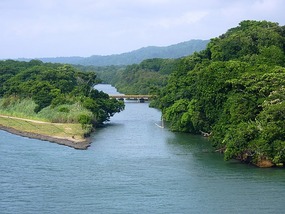
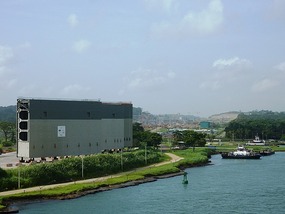
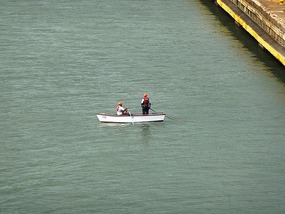
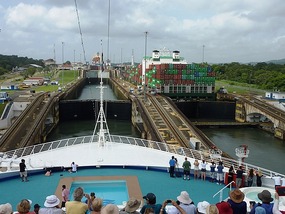















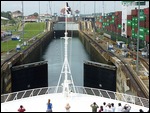
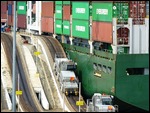
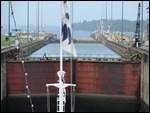
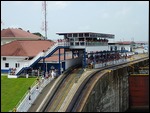
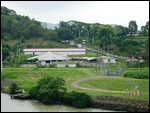


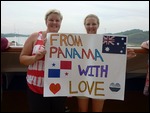
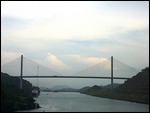
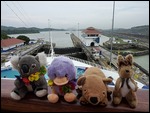
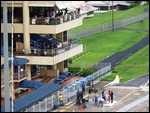
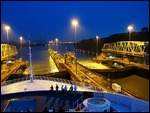
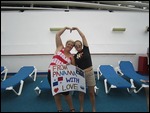
2025-05-22